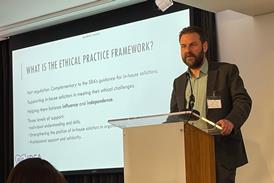First, the good news. Not only will the budget of the Ministry of Justice be over a third higher in real terms this year than in 2019–20, it is going to keep increasing.

The Institute for Fiscal Studies noted that there have been particularly large increases in capital spending, which has trebled and will rise by further hundreds of millions. ‘Are there no prison places?’, as Ebenezer Scrooge very nearly said.
The MoJ and law officers’ departments certainly did moderately well in chancellor Rachel Reeves’ Spending Review. She announced further real-terms rises, with more cash set aside for our crumbling criminal courts, the probation service and the CPS.
Note the contrast with other unprotected departments. Some – including Environment, Food & Rural Affairs and Culture, Media & Sport – are facing outright budget cuts, notes the IFS. Funding for the Home Office is also being squeezed, though largely because of planned cuts to asylum support.
So what is there for lawyers to cavil about? One Gazette reader put it rather well: ‘So, it’s the Ministry of Criminal Justice now, is it?’ Quite. The Law Society appears to have read the runes in choosing this week to relaunch its campaign for more investment in civil legal aid to ensure everyone has access to family, community care and mental health support. Fee uplifts for housing and immigration work have already been announced, but there has been no such relief for practitioners in nine other contracted categories of law.
Bindmans, meanwhile, also chose a serendipitous moment to launch its very own access to justice levy. The venerable human rights firm is to divert 10% of business client fees to a social justice fund dedicated to vulnerable people.
The initiative recalls the notion of a compulsory levy – floated years ago by former lord chancellor Michael Gove – which has long spooked City firms in particular. But Bindmans for one reckons the Square Mile behemoths could be a little more altruistic with their millions.
What is also true about civil justice is that it continues to deliver handsomely for one particular cohort of practitioners.
Bindmans reckons it has shown the way. Who – if anyone – will follow?































No comments yet